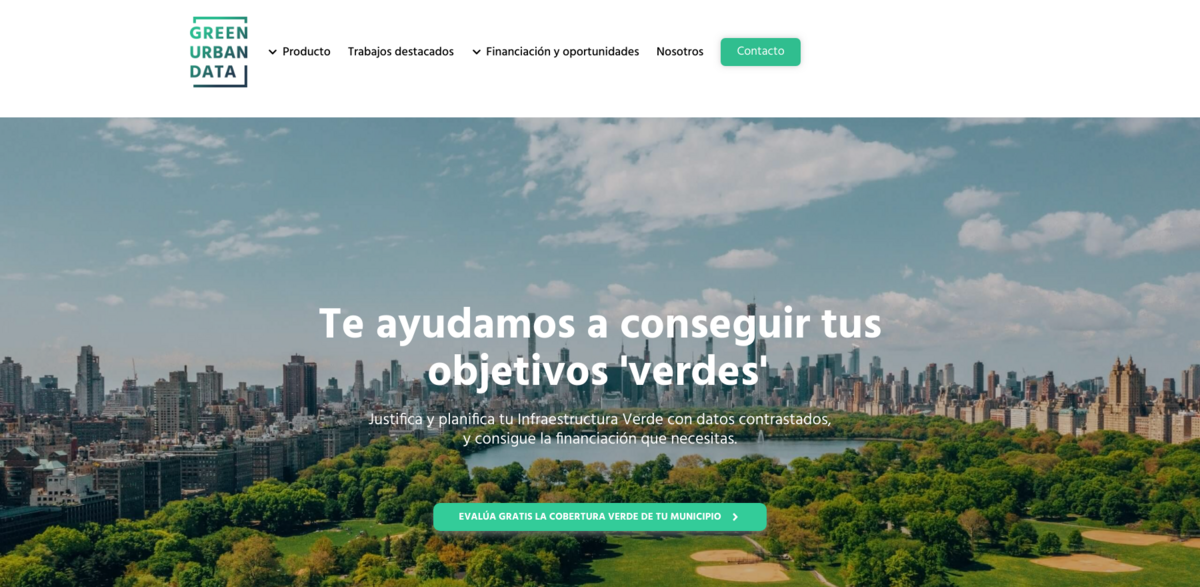What is Green Urban Data?
Green Urban Data aims to improve the health and quality of life of people in cities by providing objective evidence for making strategic decisions and managing green areas. The project is founded on environmental intelligence for resilient, healthy, and sustainable cities. Using software based on remote sensing technology, it facilitates the decision-making process and the prioritization of adaptation strategies to climate change… The journey began in 2017, and ever since, each milestone has reinforced its commitment to bettering urban environments, offering objective analyses that drive impactful change.
Main Benefit of the Approach
Green Urban Data has achieved significant recognition due to its innovative strategies, data-driven methodologies, and clear focus on green infrastructure management. Below are some key figures and facts that outline its achievements and milestones:
- Launched in 2017 with a clear vision of sustainable urban development.
- Awarded the Best Green Startup at the VLC Startup Awards in 2017.
- Finalist in the Copernicus Accelerator (Government) in 2018.
- Participated in the PARSEC Accelerator in 2020.
- Recognized as a finalist for the EO Product Award by EARSC in 2022.
Expertise in Green Infrastructure Management
This project is driven by a 100% specialized approach in the management and planning of Green Infrastructure. The multidisciplinary team, combining solid technical training with extensive experience in analytics, technologies, and environmental management, has been central to its success. There’s a genuine knack for taking complex, ever-changing data and turning it into clear, useful insights… This expertise ensures that the strategies and solutions offered are not only grounded in science but are also practically applicable in the urban context.
Data-Driven Decision-Making
The strength of Green Urban Data lies in its commitment to working with reliable, always up-to-date indicators obtained from prestigious international sources such as the European Space Agency, Copernicus, and NASA. This enables the project to leverage advanced scientific methodologies alongside established technologies like remote sensing and geographic information systems. These techniques convert complex layers of data into maps, viewers, and dashboards—tools that simplify the identification of priority areas and enhance decision-making processes. It’s all about turning raw data into actionable information that helps urban planners make informed choices for a sustainable future.
Innovative Solutions and Methodologies
At the core of the project is the use of scientific methodologies coupled with established technologies. The project consistently applies these approaches to ensure accuracy and reliability in its analyses. By embracing both traditional and innovative techniques, complex data is converted into clear and useful information. The maps, interactive viewers, and dynamic dashboards not only illustrate the present state of green infrastructures but also highlight potential areas for improvement. Such innovative solutions allow urban stakeholders to see the city’s challenges and opportunities from a data-driven perspective… This fusion of technology and sustainability creates a dynamic platform that stands as an example for modern urban planning.
Project Impact on Sustainable Cities
- SDG 11: Sustainable Cities and Communities
- SDG 13: Climate Action
- SDG 3: Good Health and Wellbeing
- SDG 9: Industry, Innovation, and Infrastructure
- SDG 15: Life on Land
Future Directions and Continued Commitment
Looking ahead, the project continues to forge a path toward a future where data and sustainability go hand in hand. With each strategic decision and every update of its reliable indicators, the goal remains clear: to maximize the positive impact on urban living conditions while promoting environmental stewardship. As urban areas face increasing pressures from population growth and climate change, the ability to convert complex data into clear insights offers an essential edge. This ongoing commitment to transparency, objectivity, and cutting-edge science stands as a beacon for other initiatives in similar fields.





















